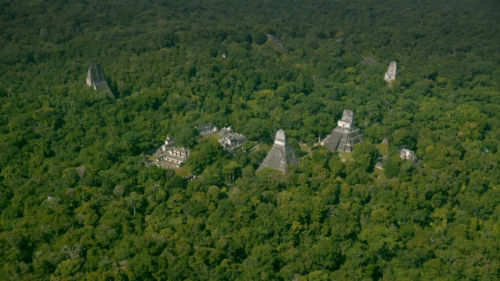Subscribe to the Grand Strategy Newsletter for regular updates on work in progress.
Discord Invitation
Post with 5 notes
On the Cusp of the Dissolution Threshold

In my post on The Dissolution Threshold I observed that when a civilization fails, the population that filled the cities of that civilization must go somewhere. If the civilization fails over a long period of time, urbanized populations have time to otherwise domicile themselves; if the civilization fails rapidly, these is little to do but flee and hope for the best in the least hopeful of circumstances.
I mentioned in that post the possibility of individuals abandoning cities and returning to a hunter-gatherer way of life. This is the paradigm for civilizational dissolution: little or nothing remains of civilization itself, except for the structures and features of the former urbanized areas, which, over time, become archaeological sites. This paradigmatic form of dissolution is probably rarely realized in fact (if ever).
Probably much more frequently that the abandonment of cities and settlement for hunter-gatherer nomadism is the abandonment of cities for village-scale subsistence agriculture. Civilization represents a condition of social organization significantly more complex than subsistence agriculture, but subsistence agriculture is always there as a fall-back position for a people with some knowledge of agriculture but who have been unable to make the complexities of civilization work for them.
The context in which a civilization arises has a lot to do with how dissolution plays out. In a paradigm case of dissolution, there would be an isolated civilization surrounded by an expansive hinterland that could absorb the entire population of the urban areas of the isolated civilization. Keep in mind that population densities of civilizations are far higher than the population densities of hunter-gathers; stated contrary-wise, hunter-gathers require far more space per person than settled agriculturalists, and urbanized populations of an industrialized civilization are even more dense. For these population densities to be absorbed into an uncultivated hinterland, that hinterland would have to be quite large, not otherwise settled by other peoples, and sufficiently productive of game and gatherable foodstuffs (nuts and berries) to keep the formerly urbanized population alive.
For a civilization in the early stages of its development, in which the urbanized populations have not lost touch with subsistence agriculture or living off the land like hunter-gatherers, this transition would be possible, though still difficult. For an industrialized civilization in which the majority of the urbanized population has completely lost touch with the traditions of living off the land, even in the event of partial dissolution of urban areas, most individuals attempting to make the transition would fail because they possess neither the knowledge nor the skills to survive. The specialized occupation by which they earned a living in an urban area would have had little or nothing to do with surviving either by farming or hunting. Such populations would rapidly die off in an extreme dissolution scenario, which would be highly selective: the few who survived would be the strongest and the most ruthless.
There is a tacit recognition of this in popular culture both as reflected in fictional civilizational collapse scenarios and in the understanding among “preppers” what a post-collapse scenario is likely to look like. None of these scenarios feature urbanized populations making a transition to hunting and gathering, but rather feature increasingly desperate nomads willing to fight and kill over the remaining resources left behind by a now-vanished civilization. This is the fate of civilized populations experiencing failure when well above the dissolution threshold.
In the case of a paradigmatic dissolution, a civilization would be well below the dissolution threshold. In the case of a messy, catastrophic failure, a civilization would be well above the dissolution threshold. In the case in which a civilization hovers at the cusp of the dissolution threshold, then I suspect that it is much more likely that dissolution primarily results in village-scale subsistence agriculture rather than hunter-gatherer nomadism.
This seems to have been the case with the failure of Mayan civilization, which I discussed in Counterfactuals about Mayan Civilization. The long, slow decline of Mayan civilization meant that formerly urbanized populations could abandon urban areas and resume the kind of subsistence agriculture that probably preceded the emergence of civilization in Mesoamerica. As I noted in my post, a couple of Mayan cities were still extant when the Spanish arrived, so that some holdout urban populations managed to keep their civilization alive at a much lower level of complexity and geographical extent. When Mayan civilization failed, then, I would say that it was on the cusp of the dissolution threshold.

 jodrawstoo liked this
jodrawstoo liked this  tachankaaaa liked this
tachankaaaa liked this pocket-sizedsweetheart liked this
geopolicraticus posted this